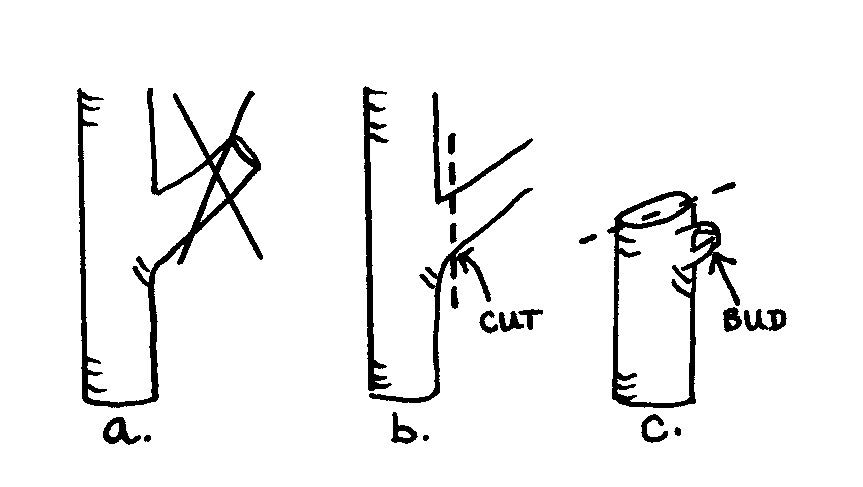Pruning Shrubs
Why Prune?
Prune your flowering shrubs to:
- Help maintain the plant’s shape and size
- Encourage flowering
- Thin out old, woody stems
- Discourage pests
- Rejuvenate old, overgrown shrubs
If left un‐pruned, the old woody stems will dominate and suppress vigorous, healthy new growth.
Tools
Hand shears - use to cut branches up to 3/4” in diameter
Lopping (long-handled) shears - use to cut branches 3/4“ – 1 1/2” in diameter
Pruning saw - use to cut branches larger than 1 1/2” in diameter
Purchase the best quality you can afford. Keep them sharp and well oiled. They will cut more smoothly and last for years. Clean your tools regularly. Wipe blades with denatured alcohol after pruning diseased wood.
Rules of Thumb
- First, look closely at the base of the plant; remove old stems back to the soil line, or back to the trunk or main stem, to make way for new shoots and allow penetration of light and air.
- Avoid leaving stubs!
- If rejuvenating a plant, remove only 1/3 of the old wood the first year, then 1/2 old wood the second year, remove all the remaining old wood the third and last year.
When to Prune?
- In late February or March, before spring growth begins, prune flowering shrubs that bloomed late in the previous spring or summer. Examples: butterflybush, beautyberry, oakleaf hydrangea, P.G. hydrangea, rose of sharon, hybrid tea rose
- In late spring or early summer, prune spring flowering shrubs right after flowering, before new buds set. Examples: andromeda, climbing and shrub roses, flowering quince, forsythia, lilac, mock orange, rhododendron, viburnum
- Do not prune after mid‐ August, otherwise new growth, susceptible to winter damage, might be stimulated.
|
a. Do not leave stubs! b. Cut cleanly, back to a main supporting stem. c. Head back to just above a bud; cut on a slight angle. |
 |
Resources
https://www.mass.gov/orgs/massachusetts-department-of-agricultural-resou...
www.massflowergrowers.com
https://ag.umass.edu/resources/home-lawn-garden